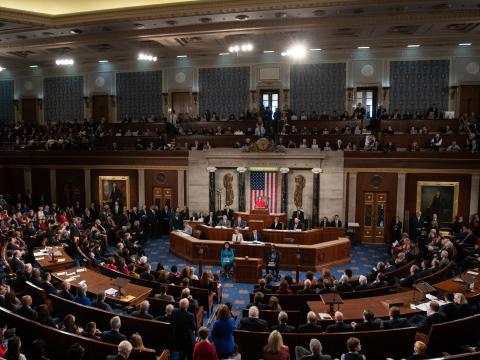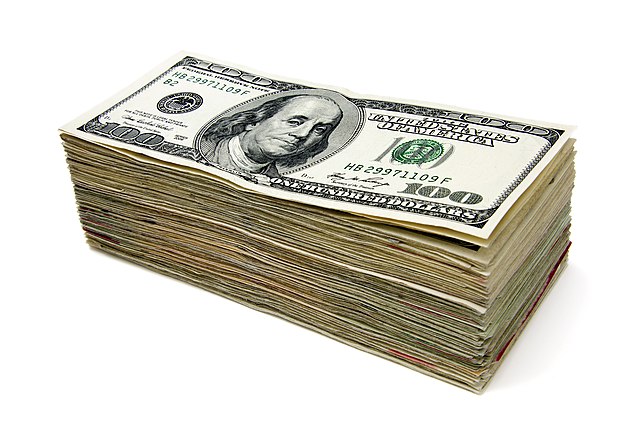Nicholas Johnson
The Gazette, December 28, 2022, p. A6
Too often, following a series like Erin Jordan’s reports on the Marengo explosion and fire, a school shooting, or events on Jan. 6, a corporate executive or public official may say, “This must never happen again.”
My response, “Well, of course.” But “never happen again” is never enough for me. What I want to know is why the folks who get the big bucks to prevent such disasters didn’t prevent this one.
Could all disasters be prevented? Of course not. But there are procedures used in business, government and the military that could reduce the number substantially.
The procedures deal with “risk”; risk perception, risk analysis, risk assessment, risk management and risk communication — procedures useful in our daily lives as well.
Based on others’ experiences, and using our imagination, what’s the risk of driving without fastening the seat belt? Serious injury or death in an accident. What’s the likelihood of it happening? How serious would it be if it did? What does it cost in time, money and inconvenience to fasten the seat belt?
As either the likelihood or seriousness of the risks increase, we’re less likely to gamble on their happening. As either or both are minimal, we’re less concerned.
Which brings us to COVID. What are the risks? If we become infected we can infect others, even if we have no symptoms. Some of the unpleasant symptoms can include fever, sore throat, fatigue, and loss of taste or smell, requiring cancellation of work and plans. “Long COVID” (possible monthslong serious symptoms), hospital stays and death are additional risks. [Photo source: commons.Wikimedia.org]
At one extreme are those who never leave their house. At the other are those who haven’t been vaccinated, never wear masks, and sit with friends in crowded bars.
In between are most of us, wondering whether an N95 mask is worth the added protection. Balancing the pleasure of being with family and friends who say they’re fully vaccinated against the risk one may be infected but not symptomatic. We want to follow President Barack Obama’s admonition: “Don’t do stupid stuff.” But not to extremes.
Tennessee Williams, a University of Iowa student in 1937-38, and noted for his 1947 play, “A Streetcar Named Desire” (among others), closed the play with the character, Blanche DuBois’ last line, “I have always depended on the kindness of strangers.”
Blanche had her challenges, but her revelation expresses the lack of foresight that many of us, including myself, have on at least one occasion brought to risky behavior.
Iowa City Historian Irving Weber’s son, Willis, and I were neighbors and partners in numerous risky explorations and experiments. One involved running a telegraph line from the roof of my house, across Melrose Court, to the roof of his. There is no way I would be climbing on either roof today. But back then it wasn’t that we thought ourselves invincible, it’s that we didn’t think about risk at all.
Today, at 88, I’m holding stairway railings and I gave up my love of bicycling. I’ve found the tools of risk assessment useful. Maybe you would, too.
_______________
Nicholas Johnson, now fully vaccinated, was former co-director of the Iowa Institute for Health, Behavior and Environmental policy. mailbox@nicholasjohnson.org
Never happen again. E.g., John Costa, “ATU Shocked and Saddened by Fatal Texas School Shooting,” Amalgamated Transit Union, May 25, 2022, https://www.atu.org/media/press/2022/atu-shocked-and-saddened-by-fatal-texas-school-shooting (“We must find the courage to come together as a nation to take serious action to ensure that these unspeakable acts of violence never happen again.”)
Risk. Lisa D. Ellis, “Using a Risk Analysis Framework to Guide COVID-19 Decisions,” Harvard T.H. Chan School of Public Health, Jan 7, 2021, https://www.hsph.harvard.edu/ecpe/using-risk-analysis-in-covid-19/ (“Risk analysis is a scientific tool that can help us assess threats to human health, provide input into how to manage these risks, and enable us to communicate more effectively with the general public about how best to respond to the threats,” says James K. Hammitt … “For communicable diseases like COVID-19, which are spread from one person to the next, a person’s risk is affected by other people’s behaviors.” … Risk analysis … includes the following three key steps: risk assessment, risk management, and risk communication.” … “We can estimate how much an action might reduce transmission, then find out how costly or burdensome it would be. Keep in mind that some interventions are costly, but they don’t reduce the risk much. So, you need to weigh each intervention to see if it makes sense,” he says. … some experts felt it would be better to let people develop herd immunity. Whether the latter is a good idea depends on how willing people are to get sick, and how many will die, and how costly it is to try other things,” … System 1 is fast and is based on feelings. This is usually our default system. System 2 is analytical and takes more effort and more time, so we can’t activate this system too often,” he notes. … system 2 and think more carefully about how much risk their actions could have. As a result, they might decide not to gather because the chance of harming loved ones outweighs the benefit of getting together. … activate system 2 and think more carefully about how much risk their actions could have. As a result, they might decide not to gather because the chance of harming loved ones outweighs the benefit of getting together.)
Google search: “what college courses deal with risk assessment” (“Relevant majors/degrees: Risk management. Management or business studies. Finance or economics. Science Statistics. Engineering. Law.
MBA risk management includes: Liability Insurance. Agricultural Insurance. Marine Insurance. Life Insurance. Fire Insurance. Investment Planning and Management. Risk Management. Marketing of Financial Services.
Risk Management … Framework … Information Systems … Plan … Agency …Tools”)
Risk in everyday life. Your Dictionary Staff, “Examples of Risk You Encounter Daily,” YourDictionary, https://examples.yourdictionary.com/examples-of-risk.html (“A teenager knows that she will be grounded if she chooses to invite friends over after school instead of doing her homework, but also knows that the likelihood of her parents finding out she did so is slight. If the teenager chooses to invite her friends over she is taking a risk of getting in trouble with her parents.
• A 55-year old man wants to quickly increase his retirement fund. In order to do so at a rapid pace, he must change his investments to those that could either yield higher results or completely fail, in which case he would lose his retirement. If the man chooses to move his investments to those in which he could possibly lose his money, he is a taking a risk.
• A gambler decides to take all of his winnings from the night and attempt a bet of "double or nothing." The gambler's choice is a risk in that he could lose all that he won in one bet.
• An employee knows that the time for him to leave work is contractually at 5 p.m. and leaving early puts his job in jeopardy. However, the man is motivated to get home early to let out his sick dog. By leaving early, the man is risking getting caught and facing the consequences of breaking the rules.
• A driver is approaching a yellow light and must choose to brake in order to stop in time for the light to turn red or to accelerate to make it through the light before it turns red. If the driver accelerates, he is risking going through the light which could result in an accident or a ticket.
• A student in college knows that there is a curfew by which students are expected to be back on campus in the evening. However, the student wants to stay out later with the group she is with. If she chooses to stay out past the curfew time, she is risking experiencing the consequences for choosing not to follow the rules.
• A man lost his job and is unable to pay his rent. As a result, he makes the choice to steal money from the local convenience store. In doing so, he risks being caught and arrested.
• A woman gets into her car in the morning and notices that the gas level is low. She chooses to drive to work, regardless, without stopping at a gas station. By making this choice she is risking that she will run out of gas in her car on the way to work.
• A woman watches a man kidnap a child. In order to keep him from getting away from the scene of the crime, the woman jumps in front of the car. By doing this, she risked her life in order to save the child.”)
Mike Patton, “Everyone Needs Risk Management,” Forbes, Nov. 30, 2014, https://www.forbes.com/sites/mikepatton/2014/11/30/everyone-needs-risk-management - excellent (essential?) article, requires Forbes subscription
Daniel Speiss, “The Importance of Risk Management in Daily Life,” Linkedin, Nov. 15, 2021, https://www.linkedin.com/pulse/importance-risk-management-daily-life-daniel-%D7%93%D7%A0%D7%99%D7%90%D7%9C-speiss (“• Every decision we make is laced or spiked with an underlying layer called risk, and navigating life without knowing that risk is an active participant in what makes your present moment and future are, well, risky.
• What do I mean by risk? Every decision that we decide to enact, whether that decision is social, experiential, financial, has to do with risk management.
• Managing risk isn't something we're taught in school, even at a college or university level. Most people go through life unaware of risk being one of the many materials that go into the structure of making choices.
• Everyone is going to have a personal attitude towards risk and risk management. Some people ignore risk by not doing anything risky (which still implies risk), some play the middle of doing a little of both, and some people are all-around risk-takers. Everyone is at some point on the spectrum of how they view and utilize risk and risk management.
• The purpose of this read is to elicit a remembrance of risk, that risk is something we do and use every day, in the most unexpected ways. Risk is a unique tool to help guide us in life when making any and all decisions.
• Examples of risk could be how you manage your health (or not), how you strategize your performance at work and meet your goals, who you allow into your life, and the effects that have on your social life and network. You could even say that there is risk in what coffee mug you want to use in the morning, when one mug elicits a micro mood as opposed to the other and how that will affect your day.
• When considering important decisions, consider the risks, your goals, and the expected outcome you want. When making the small choices in your day, how are you guiding yourself to manage the theme tied to these choices?
• If you are easily stressed, do you manage the risk of being exposed to stressors in your day-to-day life? If you need to watch your diet, are you managing the risk of your exposure to friends, family, and places that encourage behavior that would go against your current efforts?
• Poor risk management skills come at a cost, and that cost is what you want out of life. Managing risk can be the difference between seeing your dreams as intangible and seeing them as a reality
• Thinking differently about how you approach to risk can change your life within days, given the attention.
• If you are to leave this blog post with anything, I would only encourage you to think about risk, how risk is involved in your life both big and small, and challenge yourself to think about the magnitude in which you manage risk in your life.
• What are your goals? Write them down, and then think about setbacks you've had towards those goals. You will find within every goal, every desire, the risk is there, mostly unmanaged and unmitigated.
• What will you do differently knowing the risk is a key player in life and what happens to you?”)
“How to Manage Risk in Your Daily Life,” Fashion Gone Rogue, fashiongonerogue.com/how-manage-risk-your-daily-life/ (“while driving may be a risk, wearing a seatbelt reduces the risks.
Many people right now are at a big of a crossroads in how they think about risk, however, with the covid-19 pandemic. …
In essentially every way, there are usually four general steps of risk management. The first is assessing the risk. Then, there is categorizing the risk. This means you determine if the risk is small or minor to you, or more serious and severe.
You have to think about the probability of risks occurring too.
Then, once you’ve handled these steps, you can start considering your options. Education can be used in all of these steps.”)
Adnan Manzoor, “7 Ways to Apply Risk Management to Your Personal Life,” Lifehack, https://www.lifehack.org/515631/7-ways-apply-risk-management-your-personal-life
COVID Risk. “Symptoms,” COVID-19, CDC, Oct. 26, 2022, https://www.cdc.gov/coronavirus/2019-ncov/symptoms-testing/symptoms.html
Google search: COVID risk assessment and masks
Lisa D. Ellis, “Risk Analysis in the COVID-19 Pandemic: Weighing the Cost and Benefits of Vaccines and Masks,” Harvard T.H. Chan School of Public Health, Nov 7, 2021, https://www.hsph.harvard.edu/ecpe/risk-analysis-in-the-covid-19-pandemic-weighing-the-cost-and-benefits-of-vaccines-and-masks/ (“Every single day, people take risks. They drive in cars and fly in airplanes, expose themselves to environmental pollution and so much more. While some of these public health risks are so integrated into our lives that we’ve stopped worrying about them, other risks—such as engaging in activities that increase your likelihood of contracting COVID-19—can be much harder to ignore right now. … look to a risk analysis framework to measure the level of threat and to determine how best to respond and communicate the risk to others. Specifically, you can use this framework to compare the cost of actions like masking with the extent of how that might reduce transmission and save lives. When you weigh these two factors against each other, you can determine if the cost of the action is worth the benefit—in this case, reducing the number of people getting sick and dying. … “People who are vaccinated are less likely to contract COVID-19, and if they do become infected, they are less likely to become very ill or die. With masks on the other hand, it seems clear that they do a lot to help the wearer not infect other people,” he adds. … “)
“Analyzing Risk: Principles, Concepts and Applications,” Harvard School of Public Health, Continuing Education, Feb 11-14, 2019, https://alumni.sph.harvard.edu/s/1319/02-HSPH/20/interior.aspx?sid=1319&gid=2&pgid=1661&cid=3456&ecid=3456&crid=0&calpgid=13&calcid=664
Devabhaktuni Srikrishna, “How to Judge COVID Risks and When to Wear a Mask; Scientific American asks experts in medicine, risk assessment and other fields how to balance the risks of COVID with the benefits of visiting public indoor spaces,” Scientific American, Apr 19, 2022, https://www.scientificamerican.com/article/how-to-make-smart-decisions-about-covid-risk-benefit1/
Risk Assessment, Wikipedia.org, https://en.wikipedia.org/wiki/Risk_assessment (“This involves identification of risk (what can happen and why), the potential consequences, the probability of occurrence, the tolerability or acceptability of the risk, and ways to mitigate or reduce the probability of the risk.[2] … At the individual level, a simple process of identifying objectives and risks, weighing their importance, and creating plans, may be all that's necessary. … Exposure to a pathogen may or may not result in actual infection, and the consequences of infection may also be variable. Similarly, a fall from the same place may result in minor injury or death, depending on unpredictable details. In these cases, estimates must be made of reasonably likely consequences and associated probability of occurrence. … General health There are many resources that provide health risk information.
The National Library of Medicine provides risk assessment and regulation information tools for a varied audience.[24] These include:
TOXNET (databases on hazardous chemicals, environmental health, and toxic releases),[25] … The US Environmental Protection Agency provides extensive information about ecological and environmental risk assessments for the public via its risk assessment portal.[29] … In project management, risk assessment is an integral part of the risk management plan, studying the probability, the impact, and the effect of every known risk on the project, as well as the corrective action to take should an incident be implied by a risk occur.[37] … the probability and magnitude of unfavorable outcomes such as injury, illness, or property damage due to environmental and related causes, compared to the human development or other benefits of outdoor activity.”)
A Heeney 1, F Hand 2, J Bates 2, O Mc Cormack 2, K Mealy 2, “Surgical mortality - an analysis of all deaths within a general surgical department,” Surgeon, Surgeon . 2014 Jun;12(3):121-8. doi: 10.1016/j.surge.2013.07.005. Epub 2013 Sep 8, PubMed.gov, https://pubmed.ncbi.nlm.nih.gov/24021395/ (“Mortality rate following elective surgery was 0.17% and following emergency surgery was 10-fold higher (1.7%). The main cause of post-operative death was sepsis (30.02%). Emergency operations, increasing age and major procedures significantly increased mortality risk (p < 0.001).”)
Long COVID. Michael Marshall, “The Lasting Misery of Coronavirus Long-Haulers; Months after infection with SARS-CoV-2, some people are still battling crushing fatigue, lung damage and other symptoms of ‘long COVID,’” nature, Sept. 14, 2020, https://www.nature.com/articles/d41586-020-02598-6
“Long-Term Effects of Coronavirus (Long COVID),” National Health Service England, Oct. 24, 2022, https://www.nhs.uk/conditions/coronavirus-covid-19/long-term-effects-of-coronavirus-long-covid/
Tae Chung, et al, “Long COVID: Long-Term Effects of COVID-19,” Health, Johns Hopkins, June 14, 2022, https://www.hopkinsmedicine.org/health/conditions-and-diseases/coronavirus/covid-long-haulers-long-term-effects-of-covid19
Mayo Clinic Staff, “COVID-19: Long-Term Effects,” Mayo Clinic, June 28, 2022, https://www.mayoclinic.org/diseases-conditions/coronavirus/in-depth/coronavirus-long-term-effects/art-20490351
“Long COVID or Post-COVID Conditions,” COVID-19, CDC, Dec. 16, 2022, https://www.cdc.gov/coronavirus/2019-ncov/long-term-effects/index.html
“Long COVID: Some COVID-19 Symptoms Last for Months,” UC Davis, Feb. 10, 2022, https://health.ucdavis.edu/coronavirus/covid-19-information/covid-19-long-haulers
Tennessee Williams. “Tennessee Williams,” LitCity, University of Iowa, https://litcity.lib.uiowa.edu/person/tennessee-williams/ (“Tom Williams, an aspiring playwright and transfer student a year short of a degree . . . enrolled at the University of Iowa, earning his B.A. in 1938, and soon thereafter picked up the moniker ‘Tennessee.’”)
Willis Weber. See my “In Memoriam: Willis Weber,” FromDC2Iowa, Nov. 5, 2006, https://fromdc2iowa.blogspot.com/2006/11/in-memoriam-willis-weber.html
Kindness of strangers. “Streetcar Named Desire,” text, https://docs.google.com/viewer?a=v&pid=sites&srcid=Zy5oYXlzY2lzZC5uZXR8bXJzLXN1bWVyc3xneDoyOTc4ZGVkZjA2NjJhOTUw







